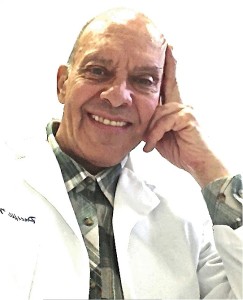My great-grandmother was an herbalist and healer in Cuba – a curandera.
When I was a small boy, I remember her treating my finger warts by blindfolding me, then rubbing my fingers with a mysterious ointment while she prayed.
The warts disappeared within a few days.

As a child, it seemed part of the natural way of things – it was how the adults in our lives helped us when we were sick.
I suspect my great-grandma had had some kind of shamanic training, though she would never have called it that.
My mother used herbs for insomnia, upset stomach, and nervous agitation – I remember mint, linden flowers (tila), and chamomile being part of her healing arsenal.
My grandfather, a pharmacist in Cuba, gave a talk at a conference in 1919 on the dangers of pharmaceutical medicine. I still have a transcript of the talk that I’ll publish in a future newsletter.

I reckon I inherited a love of herbal medicine as part of my family genes. When I started college as a pre-med student, I soon realized that conventional medicine didn’t seem like the right path for me.
When I discovered that naturopathic medicine was an option, there was no hesitation or second-guessing – I knew that it was far and away the most attractive choice.
A magical feature of natural medicine is its vast lore on the curative power of simple, everyday herbs.
I’ve always felt, both intuitively and as a result of my research and naturopathic training, that all of the medicines we need to heal ourselves have been provided for us by the Creative Intelligence. Thus, our task is one of discovery.
If the same vast economic resources could be devoted to herbal medicine that we’ve invested in pharmaceutical research, I’m sure that our medical system would be just as effective, but vastly simplified, and of course, a lot cheaper.
Whenever “new” discoveries about the healing potency of herbs arise, I’m delighted to think of how many will benefit.
I think of the recent studies on the healing powers of curcumin, the active ingredient of turmeric root. But many common, everyday kitchen herbs also have powerful, though long-forgotten, healing properties:
* Basil (Ocimum basilicum). Like other herbs in the mint family, basil can calm an upset stomach and improve appetite. Lab studies have shown that basil has powerful antibacterial properties.
* Oregano (Origanum vulgare). Oregano ranks high among culinary herbs for its exceptional antioxidant power. Many of oregano’s medicinal properties also stem from its anti-inflammatory and antibacterial compounds. In clinical studies, these substances have shown strong indications that they can offer protection against cancers, heart disease, and stroke.
* Rosemary (Rosmarinus officinalis). Rosemary stimulates the central nervous system and circulation, making it very helpful in the treatment of low blood pressure and sluggishness. Rosemary essential oil can alleviate the pain of sprains, arthritis, sciatica, and neuralgia. The essential oil can also block histamine, the chemical culprit in asthma and allergies.
* Sage (Salvia officinalis). Sage is an excellent digestive aid, and a natural disinfectant and deodorizer. It can help reduce the intensity of menopausal hot flashes and slow, heavy menstrual bleeding. It also has positive effects on memory and concentration.
The next time you’re feeling under the weather, consider doing a little online research for herbal remedies that might offer you a viable – and less costly – option.
Or come see us for information about the most effective herbs to address your need. We would love to help.
To learn more about Dr. Marcel’s work, click HERE.
